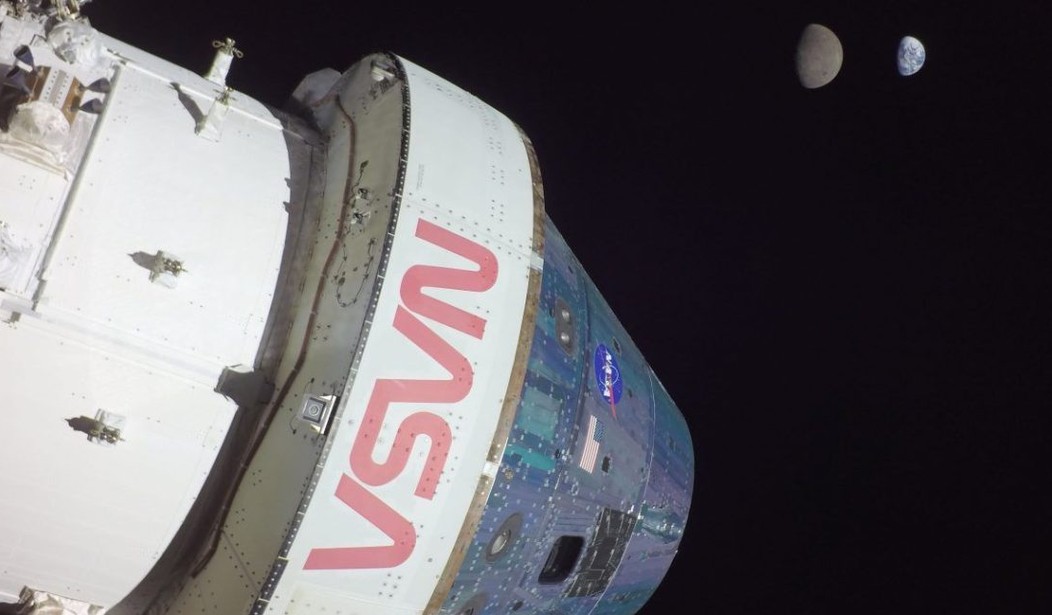If the human race is going to colonize the planets and exploit the extraordinary riches in outer space, it will need local power generation.
Surprisingly, solar power is a much better option in space because 95% of the sun's energy is blocked from the Earth's surface. No such problem arises on bodies that have no atmosphere.
However, nuclear power is still a far more efficient means of energy production. Setting up a permanent colony on the Moon means building a reliable, efficient means of producing energy. Nuclear power will fill the bill nicely.
Secretary of Transportation Sean Duffy, who also functions as interim NASA administrator, announced an ambitious plan to put a nuclear reactor on the Moon by 2030.
He also announced that competitive bidding would begin to replace the 30-year-old International Space Station.
Both of these efforts have some urgency. China will try to land an astronaut on the Moon sometime before 2030 and, more importantly, establish a permanent base. The Chinese and Russians have also discussed putting their nuclear reactor on the Moon by the mid-2030s.
Landing a man on the moon would be a significant technological achievement for China, but hardly a breakthrough. The problem presented by a Chinese nuclear reactor is far more strategically significant. The first nation to have a reactor on the Moon could “declare a keep-out zone which would significantly inhibit the United States,” the NASA directive announcing the Moon-based reactor states.
The U.S. government's return to the Moon is hopelessly over budget and years behind schedule. The Space Launch System (SLS), which includes the Artemis rocket and Orion spacecraft, has flown once and won't fly again until next year. It's an ambitious timeline to posit a Moon landing before Trump leaves office, and setting up a nuclear reactor beyond Earth has never been tried.
“It is about winning the second space race,” a NASA senior official told Politico. I'm not buying that. Manned missions are awesome, but private-public partnerships like SpaceX and Blue Origins are far more cost-effective and would probably get to the Moon ahead of NASA.
The government's plan to put a nuclear reactor on the Moon is exactly the kind of support private companies need to establish a permanent human presence there.
Exclusively for our VIPs: A 'Thrilling' Discovery of a New Exoplanet Orbiting Its Star in 'The Goldilocks Zone'
"Fission surface power (FSP) is both an essential and sustainable segment of the lunar and Mars power architectures for future human space exploration missions," the NASA directive states. "To properly advance this critical technology to be able to support a future lunar economy, high power energy generation on Mars, and to strengthen our national security in space, it is imperative that the agency move quickly."
The reactor directive orders the agency to solicit industry proposals for a 100 kilowatt nuclear reactor to launch by 2030, a key consideration for astronauts’ return to the lunar surface. NASA previously funded research into a 40 kilowatt reactor for use on the moon, with plans to have a reactor ready for launch by the early 2030s.
The first country to have a reactor could “declare a keep-out zone which would significantly inhibit the United States,” the directive states, a sign of the agency’s concern about a joint project China and Russia have launched.The directive also orders NASA to designate a leader for the effort and to get industry input within 60 days. The agency is seeking companies able to launch a reactor by 2030 since that’s around the time China intends to land its first astronaut on the moon.
The nuclear initiative means that NASA will continue to have a hand in nuclear development even after the Pentagon’s recent cancellation of a joint program on nuclear-powered rocket engines.
"There are very specific areas of the moon that are critical that who gets there first gets to plant their flag," Duffy recently said on "Hannity." "We know the Chinese want to get there as well, so speed is of the essence."
Manned spaceflight is transitioning from massive public investment to private partnership with governments. The administration has increased funding for human spaceflight while canceling science missions. To my mind, that's a backward approach to the future. Let the entrepreneurs build the rockets and spaceships that will take us to the Moon and Mars while the government provides launch facilities and infrastructure like nuclear reactors.
This would be the most efficient and probably quickest way to begin exploiting resources in outer space.
Help PJ Media continue to tell the truth about the Trump administration's accomplishments as we continue to usher in the Golden Era of America. Join PJ Media VIP and use promo code FIGHT to get 60% off your membership.










Join the conversation as a VIP Member